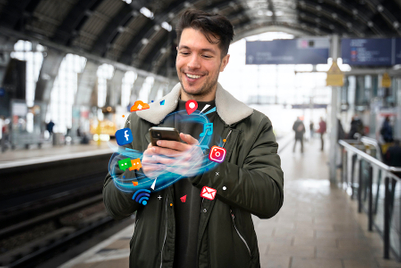
On a global scale, there has been very little reward in the advertising industry for doing digital creative well. Spikes Asia, for example, is focused on celebrating creativity but doesn’t put substantial focus on digital campaigns. With digital accounting for 45% of ad spend in APAC, why are we not seeing the same level of recognition for digital campaigns as we are for TV and OOH? One explanation for this could be that to be recognised, a campaign needs to demonstrate creativity and results, both of which are undoubtedly areas of development for the digital advertising industry.
Many digital marketers have been guilty of using the wrong metrics to measure the success of their campaigns. High CTRs and low CPMs are common measures, which don’t necessarily indicate positive ROI at all. Chasing the highest reach and CTR for lowest cost might seem ‘efficient’ on the surface, but campaigns implemented in this way have little long-term value if consumers are not engaging with them in a meaningful way—and even sometimes actively trying to avoid them. This is particularly true of brand awareness campaigns that cannot be measured with such metrics.
When campaign success has historically been evaluated in terms of CPMs or clicks, what incentive has there been to invest in thoughtful creative that makes the best use of the format? A better way of approaching digital is much needed; the system currently lacks focus on the sector’s ‘creative’ potential which, when reached, leads to higher engagement and uplifts in brand metrics.
It’s well known that TV and print assets can’t be repurposed for digital while achieving the desired effects. So why do we still see this happening? There are many advertisers who don’t consider digital formats to be capable of brand-building, despite the significant time the average person spends consuming digital media on various devices; according to reports from GroupM, this year will be the first time online media consumption overtakes linear TV consumption across the globe. Advertisers are fixated on data, targeting and delivery, leaving the creative storytelling as an afterthought. This often leads to digital creative being excluded from the initial planning phases, and therefore digital-specific assets are underdeveloped—leaving advertisers to repurpose TV and print assets for an environment for which they were not intended.
At the same time, media agencies across APAC are under increasing pressure to demonstrate the unique value they bring to the table, particularly in the wake of the growing in-housing trend, and ongoing threat from “cagencies”. Brands are seeking greater collaboration between their creative agencies and media partners, meaning creative conversations are going to become much more important.
The importance of insight and creative research
Creative insight is vital when it comes to making the most of digital. It can inform developments that have the ability to maximise campaign effectiveness and ROI. According to recent findings from eye-tracking specialists Lumen Research, a mere 12% of ads served online are ever looked at—proving that consumer attention is an extremely scarce commodity. Thus, brands need to start asking themselves how they can more effectively use display to earn users’ attention and make meaningful connections with their intended audiences without being intrusive.
Inskin conducted further research to investigate the ways in which different formats can work together to drive visual attention. We discovered that high-impact formats generate 15x more attention than regular formats. This is notable considering that we also found that higher levels of attention paid to an ad has a direct correlation with increased conversions and sales. Getting people to look at your ad for more than a second is pivotal—beyond this point is where the brand and conversion magic begins. We found that 50% of people were able to remember the advertised brand after 1-2 seconds of visual engagement time, versus 35% between 0-1 second.
On top of this, our study found that standard MPU formats attracted significantly more attention when they were preceded by a high-impact format, being looked at for 39% longer. Perhaps more significantly, MPUs shown after a high-impact format are 140% more likely to be looked at for a second or longer.
These insights are crucial, suggesting that some formats can be used to boost overall campaign effectiveness. By rethinking the planning process to include the strategic placement of high-impact formats, it is possible to draw greater attention to cheaper, standard display formats—thereby encouraging media budgets to work much harder overall. For media agencies, this means that with smarter planning, there’s capacity to transform the overall efficiency of their clients’ campaigns.
Balancing technological innovation with creativity
There’s a real opportunity to marry smart planning with creative innovation and invest in high-quality, thoughtful campaign execution. Technological advancement in digital advertising, including dynamic creative optimisation, augmented reality, artificial intelligence and virtual reality, bring with them a wealth of new capabilities for brands to achieve their creative goals. It’s time for the industry to re-think the meaning of engagement online to inspire a new era of creativity on these formats. Prioritising better quality over highest reach starts with a more nuanced understanding of different formats, how they work, and how audiences interact with each of them meaningfully.
This adjusted mindset could pave the way for more creative campaigns with more quantifiable impact, encouraging more opportunities for the celebration of creativity in digital.
Angeline Lodhia is general manager at Inskin Media Asia.




.jpg&h=268&w=401&q=100&v=20250320&c=1)

+(1).jpg&h=268&w=401&q=100&v=20250320&c=1)



